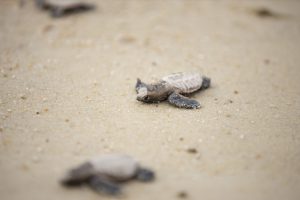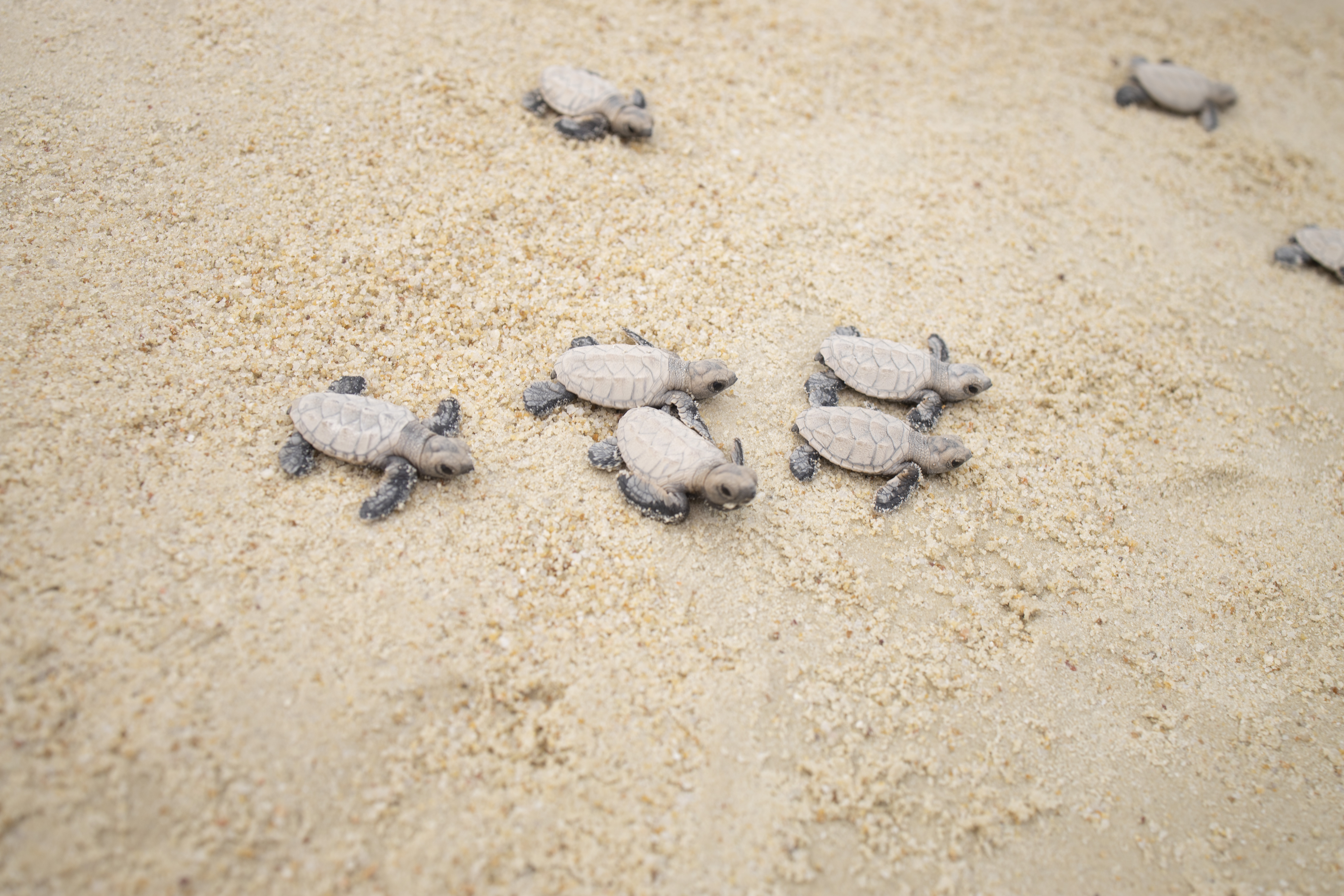On Tuesday (Sept. 3), something incredible happened on Sentosa’s Tanjong Beach with one hundred hawksbill turtle eggs hatched, which is a miraculous event that has occurred only five times since 1996.
After the baby turtles emerged from their shells, they were checked and measured before their release into the sea the following morning.
On July 14, a hawksbill turtle’s nest was discovered on Sentosa’s Tanjong Beach and reported to the Sentosa Development Corporation (SDC).
Hawksbill turtles, so named for their narrow heads and hawk-like beaks, are classified as ‘critically’ endangered sea turtles that live in tropical and subtropical waters.
The hawksbill’s narrow head and jaws shaped like a beak allow it to get food from little crevices in coral reefs. Hawksbills feed on sponges, anemones, squid and shrimp.
The SDC, dedicated to conserving any wildlife found on the island, snapped into action. According to an SDC spokesperson, the SDC constructed a protective barrier around the nest that same day.


The barrier was meant to keep the eggs safe from the hawksbill’s natural predators—like crabs and monitor lizards—and other things that could disrupt the eggs during the incubation period.
Typically found around coastal reefs, rocky areas, estuaries and lagoons, hawksbill turtles usually nest at intervals of 2 to 4 years. They lay, at an average, 160 eggs in each nest. The eggs then incubate for about 60 days.
The SDC, in cooperation with the National Parks Board (NParks), conducted regular checks to guarantee the safety of the nest, as the hatching of baby hawksbill turtles is an extremely sensitive natural process.
After 51 days of incubation, the eggs began to hatch.


This amazing and rare occurrence has happened only five times since 1996 on Sentosa Island. Previous turtle hatchings were also recorded in 2010, January 2018 and September 2018 at Tanjong Beach.
The greatest threat to the survival of the hawksbill turtle are poachers who harvest the turtles for their ornate and gorgeous shells.
These shells are still used in some parts of the world to make hair ornaments, jewellery, and other decorative items.
If you see a turtle’s nest on Sentosa, count yourself lucky and kindly report it to the SDC at 1800-SENTOSA (7368672) so that they can monitor the safety of the nest.
Wildlife conservationists advise people to keep their distance from the nests so as not to disturb it. Shining lights or using flash to take pictures of the sighted turtle is a no-no, as this could confuse or scare the turtle away.
You can visit https://www.nparks.gov.sg/gardens-parks-and-nature/dos-and-donts/animal-advisories/hawksbill-turtles to read more on what to do when you see a turtle or its nest. /TISG

